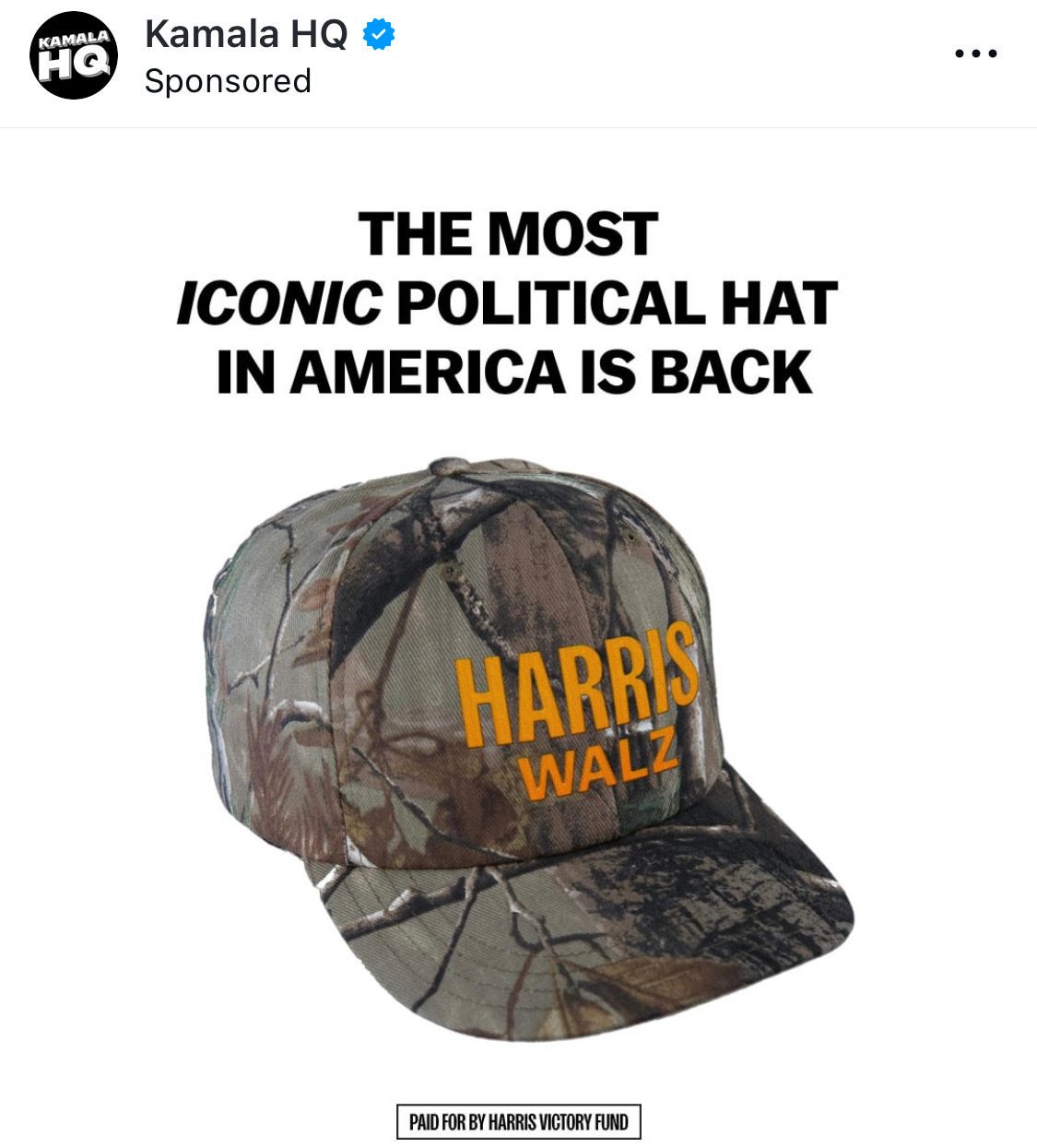There’s a new hat in town, and as Jason Diamond points out, “I don’t know if hunters in Michigan realize it’s meant for hipsters in Bushwick, but it’s kind of funny, actually.”
While it’s funny to imagine those two parties running into each other in matching getups, there’s no joke about the hat’s popularity. The initial run in August sold out in 30 minutes, and it’s currently unavailable in the campaign’s store until at least October 14th.
Besides candidate preference, what do hats—or bumper stickers and yard signs—signify? They’re a measure of enthusiasm, certainly, but can they tell us about turnout?
According to the the president of Unionwear, maker of the Harris-Walz (and Trump, McCain and Obama) hats, yes.
Since 2008, he said, the number of hats ordered by a presidential campaign has foretold the winner of that year’s election.
In 2016, Mr. Cahn said, the Hillary Clinton campaign hadn’t moved many baseball hats.
“That was fascinating to us because she did not sell any hats,” Mr. Cahn said. “We were just trying to reconcile that with the presumption that she was going to win.”
Of course, there’s a difference between popularity and electoral politics. Ask any recent Democratic nominee who didn’t make it to the White House. But even if hat sales aren’t a scientific marker, they do reflect the state of the race. One that’s gone from tepid interest to a furious finish.
Earlier in the year, Unionwear saw virtually no Biden sales, but when Harris entered the race, demand skyrocketed. They usually produce 2,500 hats a day. Lately, though, demand for Harris-Walz hats has them pushing 5,000.
Is this union-run hat factory the new soothsayer of US politics? We’ll find out in just one month.





hope so
Fascinating! Hope so...